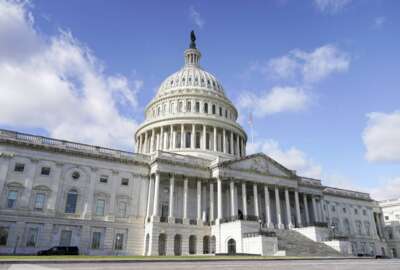Besides what Presidents Trump and Putin really talked about, one of the great mysteries in Washington concerns the Modernizing Government Technology Act.
For practically a decade, administrations have proposed the idea of a revolving fund agencies could tap to modernize their systems, and then pay back the fund from savings. Finally they got it. Thanks to the MGT Act in 2017, Congress made available $100 million for an IT revolving fund this fiscal year.
This morning, $55 million of it is still unclaimed.
The White House, working through the General Services Administration, set up a program for agencies to submit proposals for using the fund. A panel chaired by Federal CIO Suzette Kent would make the awards. Initially this group let it be known they were looking for smallish proposals, in the $2 million to $5 million range. That would make the money spread widely across the government. The projects were to be tangible, fast to implement and related somehow to improving service to citizens.
Operation of the MGT fund has been like a black hole. Little information has escaped, still less officially. Somewhat inexplicably, the panel made three awards totaling $45 million. The biggest one — about$20 million — went to Housing and Urban Development.
What’s the big secret?
Little detail is available about these awards, except for sketches posted at the CIO Council website. HUD itself has nothing at its bare-bones CIO web page. All we know is HUD is replacing a Unisys mainframe and a bunch of COBOL applications with something more modern using Java in the cloud.
For its $15 million, the Energy Department says it’s doing something other departments did years ago. Its CIO web page is a little better. Unlike HUD, its website lists the name of the CIO and his picture. But there’s nothing about this MGT project to move 64 locally hosted email systems to, presumably, one cloud email system.
Agriculture got the smallest award of $10 million. But what it’s doing seems to resonate more with the purposes of the MGT Act. USDA is planning to make its online services more useful to farmers —or what USDA calls producers. It plans to pull together data and applications now scattered all over and bring them into a single portal. Partly because USDA has been the petri dish for IT modernization generally, we know more about this project than about the other two. But still, you won’t find detail at USDA’s CIO web page.
As Federal News Radio’s Jason Miller reported, the Senate is so fed up with the lack of information it tentatively zeroed out the MGT fund for 2019 — for which the administration requested not $100 million but rather a heady $228 million. Senators had given the administration a July 21st deadline to come across with more data.
I’m hoping the General Services Administration on Thursday will shine light into this inexplicably shrouded corner. It’s having a public meeting, organized by the Advanced Technology Academic Research Center. Kent and other members of the evaluation team will talk.
Questions that need answers
- How many requests did the Technology Modernization Board receive? Word on the street it was a paltry nine, from seven agencies.
- If this was something for which agencies have been clamoring for so many years, what will you do the program to make it more appealing to a wider number of technology shops?
- When will you publicly post both the detailed submissions for funds and the detailed plans of the agencies who got money?
- How closely will the board, in future grants, adhere to the principle that the projects receiving funding should aim at improved citizen or customer service? As opposed to just updates agencies ought to be doing in the first place, like factoring COBOL into something more serviceable by contemporary programmers.
- Will the board, if it has sufficient numbers of worthy applications, go with small, fast-execution projects instead of massive overhauls?
Recall how during the early George W. Bush years Congress resolutely refused to provide special e-government funds for when the government was emerging from the static web page era. Finally Congress provisioned the hoped-for digital service trough. So where are the horses?
Copyright
© 2024 Federal News Network. All rights reserved. This website is not intended for users located within the European Economic Area.






